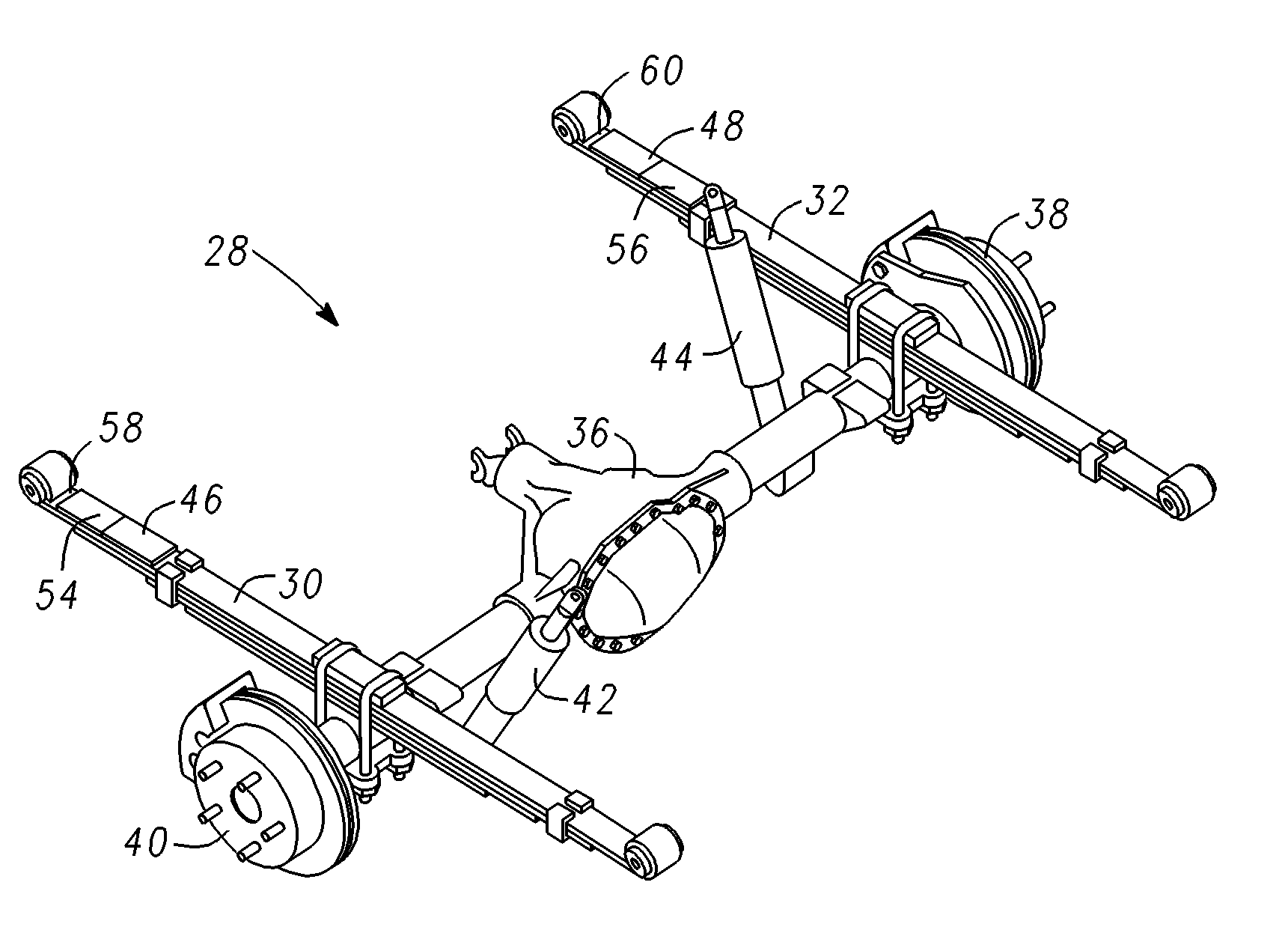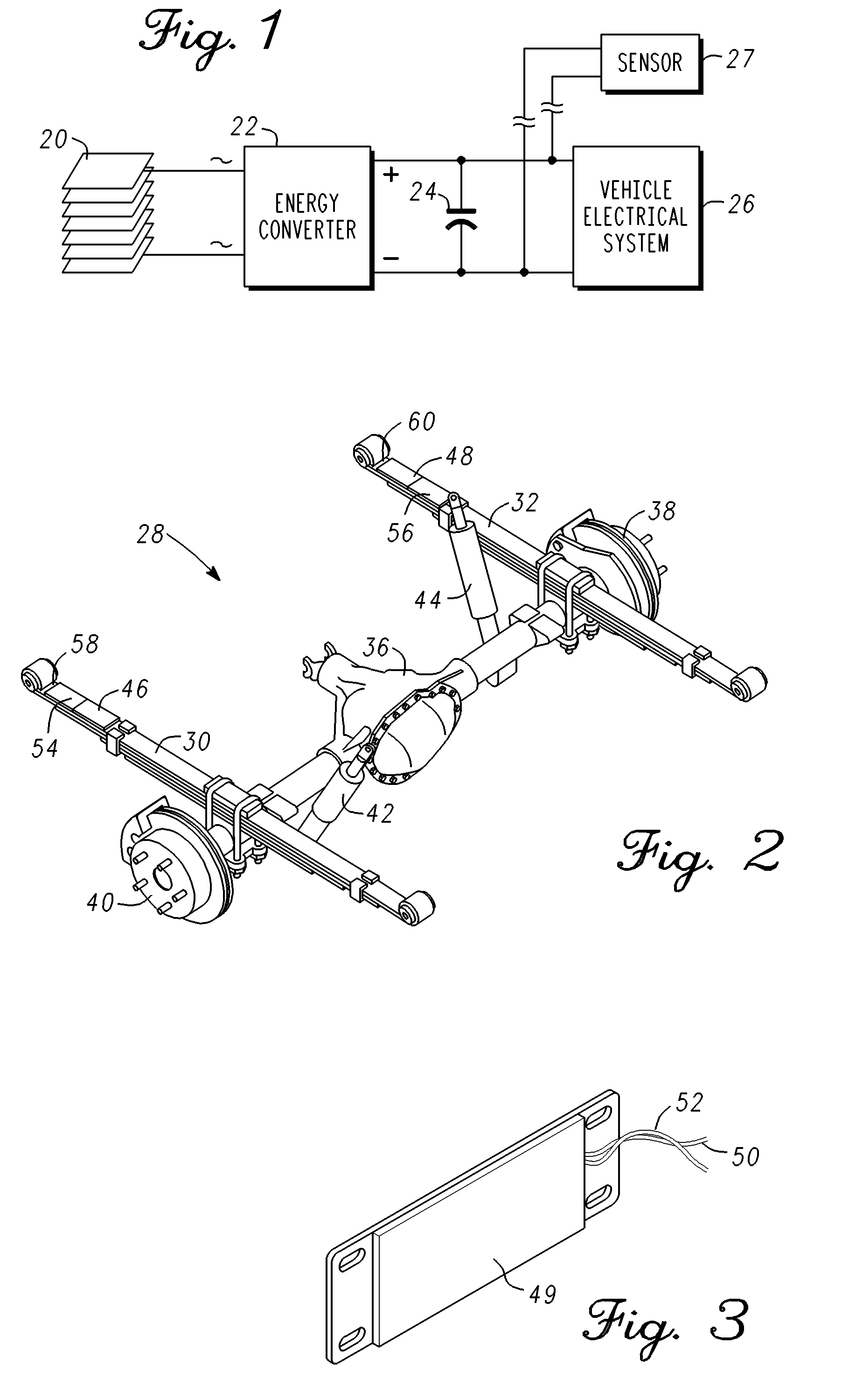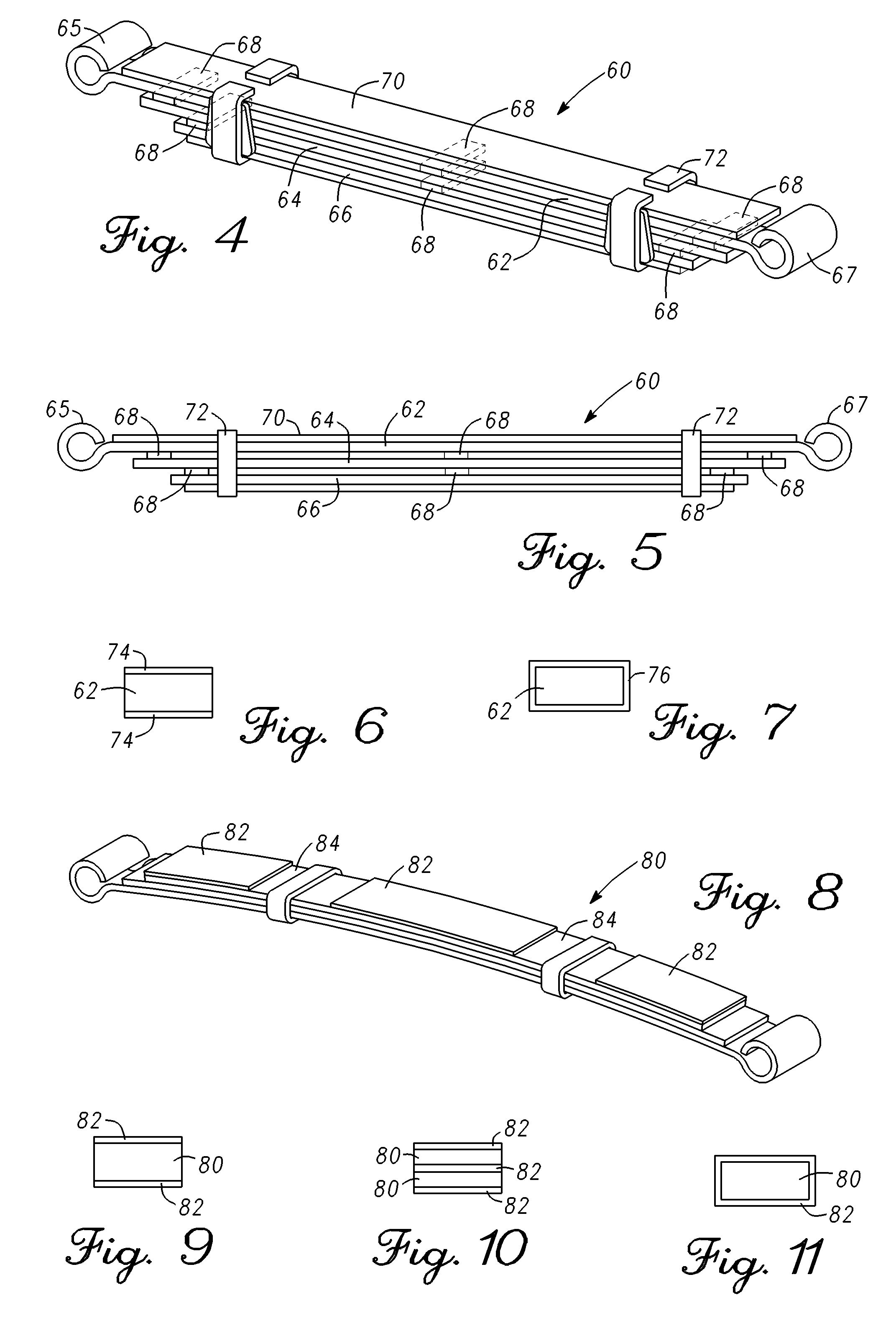Harvesting energy from vehicular vibrations using piezoelectric devices
a piezoelectric device and vehicular vibration technology, applied in the field of system for generating power, can solve the problems of large effort, vehicle vibration, and undesirable vibrations, and achieve the effect of reducing the number of vibrations, and reducing the frequency of vibrations
- Summary
- Abstract
- Description
- Claims
- Application Information
AI Technical Summary
Problems solved by technology
Method used
Image
Examples
first embodiment
[0023]FIG. 2 is an isometric view of a vehicular spring suspension system 28, in accordance with a As can be seen, leaf spring assemblies 30 and 32 are coupled to an axle / differential housing 36. Individual wheels (not shown) are coupled to rotors 38 and 40 respectively.
[0024]Leaf spring assemblies (30 and 32) are simple forms of springs commonly used for the suspension of wheeled vehicles which, in recent times, are most commonly found on heavy vehicles such as trucks, vans, SUVs, and the like. A leaf spring assembly generally takes the form of a slender, arc-shaped length of steel spring having a generally rectangular cross-section. Attachment means are provided at each end for securing the leaf spring assembly to the vehicle's frame or body. For heavier vehicles, several leaves may be stacked on each other forming several layers typically with progressively shorter leaves. A leaf spring assembly may be attached directly to the frame at both ends, or at one end directly and throu...
fourth embodiment
[0028]FIG. 12 is an isometric view of an energy harvesting apparatus in accordance with a fourth embodiment and illustrates some standard components of an automotive coil spring suspension system. First and second hubs 81 and 83 are mounted for rotation on axle assembly 85. Damper assemblies 87 and coil springs 89 are coupled between axle assembly 85 and the vehicle's frame (not shown) in the well known manner to provide a smoother and more stable ride. In this embodiment, flexible piezoelectric composite strips 91 of the type described above are mounted on coil spring 89 as is shown more clearly in FIG. 13. As the coil springs extend and compress during vehicle travel, piezoelectric strips 91 (or a plurality of patches in series or parallel) will deform resulting in a voltage across the piezoelectric device's terminals (e.g. 50 and 52 in FIG. 3). A rectifier 93 may be mounted to the vehicle's structure (e.g. the axle assembly) and coupled to piezoelectric strips 91 to convert the A...
fifth embodiment
[0029]FIG. 14 is an isometric view of an energy harvesting apparatus in accordance with a There is shown in FIG. 14 an automotive suspension that comprises a frame or body side rail 95, a lower control arm 97, and a coil suspension spring 99 coupled between frame 95 and control arm 97. As can be seen, spring 99 is coupled to frame 95 by means of a spring seat 101 having a central protrusion 103 that positions the upper portion of spring 99, and a spring isolator 105 made of a resilient material (e.g. rubber, polyurethane elastomer, etc.) positioned between coil spring 99 and spring seat 101 to avoid contact noise during suspension travel.
[0030]FIGS. 15 and 16 are first and second embodiments of spring isolators 103 and 107, respectively. In each case they comprise an annular portion 109 and a central protrusion 11. Each is provided with a piezoelectric annular disk 112. In FIG. 15, piezoelectric disk 112 is positioned between layers of resilient material 114 and 116. In FIG. 16, a ...
PUM
 Login to View More
Login to View More Abstract
Description
Claims
Application Information
 Login to View More
Login to View More - R&D
- Intellectual Property
- Life Sciences
- Materials
- Tech Scout
- Unparalleled Data Quality
- Higher Quality Content
- 60% Fewer Hallucinations
Browse by: Latest US Patents, China's latest patents, Technical Efficacy Thesaurus, Application Domain, Technology Topic, Popular Technical Reports.
© 2025 PatSnap. All rights reserved.Legal|Privacy policy|Modern Slavery Act Transparency Statement|Sitemap|About US| Contact US: help@patsnap.com



